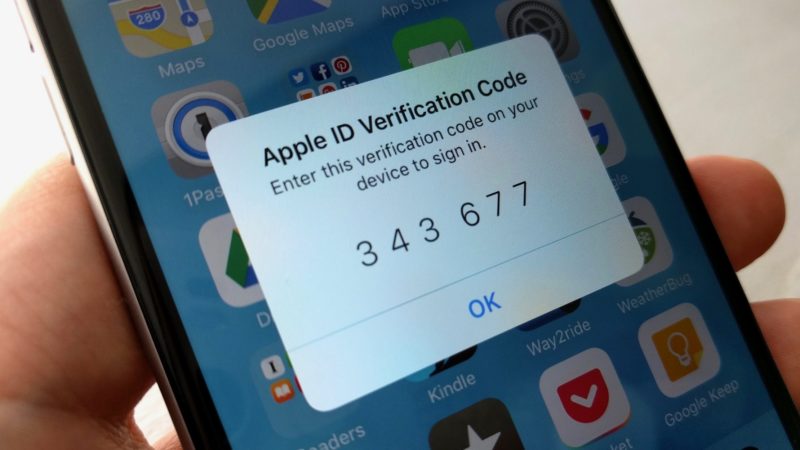The Internet of Things opens limitless possibilities for virtually every type of user. So let’s check out everything about the IoT Network article. The managers of smart offices can kick back and relax, knowing that their biggest assets are protected by smart cameras, while the owners of smart homes can enjoy the convenience of smart TVs and thermostats.
🔥🚀 Get Set to Have Your Mind Blown! Ever questioned how your refrigerator magically notifies you when you’re out of milk or how your smartwatch detects when you’ve had a bad night’s sleep? Explore the invisible network of connections known as the IoT Network, which is revolutionizing EVERYTHING and quietly influencing our future. This isn’t just another technological fad; it’s the key that unlocks a world you previously believed only existed in science fiction films. Continue reading, and you’ll be the party’s smartass! 🎉🎓🔍
But however smart and convenient, the IoT technology doesn’t come without risk.
Multiple reports of data breaches have revealed that networks of interconnected devices can only be as strong as their weakest link, which is usually not enough. The early adopters are struggling to keep their devices protected from cybercriminals, to whom the Internet of Things is quite an easy target. Now let’s get to know more about this IoT Network guide.
Here’s what makes your IoT network vulnerable and how to protect it.
The More Devices, the Bigger the Problem
Every unprotected device is an easy target for cybercriminals.
Now imagine having two or three of them connected to the same network. Unfortunately for IoT users, cybersecurity is not the highest priority to the manufacturers of connected devices. As a result, a lot of these devices come with no built-in security features, thus compromising entire IoT networks.
One gadget can compromise the security of ten or more devices.
This is how hackers were able to hack into one WiFi baby monitor and threaten parents they would kidnap their child. Or how criminals could physically break into a house after accessing smart thermostat data and determining nobody’s home. Unprotected IoT is not a small threat.
And the more devices you have, the bigger the problem.
Everything Starts with Your WiFi Router
In a great number of reported cases, the main vulnerability in an IoT system is a WiFi router. As a central device that keeps all other devices connected to your smart network, a router is the most obvious and most commonly used point of entry. A lot of WiFi routers are not secure enough.
Security-wise, a WiFi router is the most overlooked IoT device.
For example, most IoT users don’t know that they are supposed to change their WiFi router’s name and set up encryption. This is necessary because hackers can use the router’s default name to find the easiest way in based on its brand and model. And without encryption, no IoT network is secure.
(Guide) How to Keep Your IoT Network Secure?
In addition to choosing only the best, most reliable tech brands and manufacturers for your smart IoT system, you can employ a couple of other tricks to keep your network vulnerability-free. Start with your WiFi router, change its name, set up WPA2 encryption, and create a strong password.
Keep all your Devices Password-Protected
You need a complex, random password for every device in your network. A good password manager app can help you generate different unique passwords and keep them under the key. Whenever you can, use two-factor authentication, especially for your smartphone and important online accounts.
Check the Security Settings for your Tech
Just the same as you should change default usernames and passwords for your devices, you should also check their security settings and adjust them in a way that benefits you, not the manufacturer. This is particularly important for devices that collect your data and exchange it with third-party apps.
Be Careful while Browsing the Internet
Browse the internet very carefully, whether you’re using a PC or your smartphone. Consider making your IP address and online data fingerprint unreadable by using a virtual private network for your PC and your smartphone. That way, you’ll protect your IoT network from both spying and data mining.
Disconnect the Devices you’re Not Using
The devices you’ve stopped using pose a particular risk to your security system. Not only do they instil a false sense of security, but they also stay dormant without updating to the latest software version. This means that unused IoT tech is full of vulnerabilities you’ve probably forgotten all about.
Update your Software Systems Regularly
Never forget to keep your IoT devices up to date. Some devices have automatic update reminders, and others don’t. But even if you have to spend some time looking for updates and running them, this time is never wasted. Outdated systems are full of security flaws and gaps that are easy to exploit.
A device, Data, & Network Security
To ensure the strong security of your IoT system, you should be wise to implement the best practices for keeping your devices, data, and network protected on all fronts. Using a combination of these three security protocols, you’ll be able to regain full control and stay on top of your smart IoT network.
When used and appropriately secured, IoT can be very safe and convenient.
Essential Takeaways
| Point | Explanation |
|---|---|
| Ubiquity | IoT networks are everywhere, from our homes to industries. |
| Components | Devices, Connectivity, Data Processing, and User Interface are crucial. |
| Benefits | From efficiency to cost savings, the benefits are manifold. |
| Challenges | Security and data overload are significant concerns. |
| Future | Edge computing and 5G will shape the future of IoT networks. |
Final Verdict:
So this is all about the IoT Network article guide. Don’t miss out on all the benefits that this cutting-edge technology has to offer. In homes and small office environments, these five security techniques are enough to get you started, and they require minimum effort and time. Use them together with your common sense to ensure maximum security.
IoT networks are ultimately changing how we live and work. We will see more seamless integrations, cleverer automation, and improved user experiences as technology develops. In the upcoming years, it will be crucial for both individuals and businesses to embrace and comprehend the IoT network.
✨ The Internet of Things Network emerges as the unsung hero in the complex dance of gadgets, data, and daily life. The IoT rhythm can be felt everywhere, from the quiet operations of our smart devices to the elaborate orchestrations of industrial equipment. The promise of a smarter, more connected world isn’t just a distant dream as we stand on the cusp of a tech revolution—it’s our reality. Dive in, keep an open mind, and embrace the role that the IoT Network plays in the digital symphony of our contemporary world. 🌍🔗🎶
People Also Ask (FAQ):
Q1: What exactly is the IoT Network?
A: The IoT Network, or the Internet of Things Network, serves as the backbone of the IoT ecosystem. It facilitates the seamless communication between smart devices, applications, and systems, enabling them to exchange and interpret data.
Q2: Why is the IoT Network important?
A: The IoT Network is crucial because it brings the power of the internet to everyday objects. From smart home appliances adjusting to our preferences, to industries optimizing operations based on real-time data, it’s reshaping our world, enhancing efficiency, and improving user experiences.
Q3: Are there any security concerns associated with the IoT Network?
A: Yes, as with any connected technology, there’s an inherent risk of cyberattacks. The more devices we connect, the broader the surface becomes for potential security breaches. It’s essential to prioritize security measures and stay updated with the latest protocols to mitigate these risks.
Q4: How does the IoT Network affect businesses?
A: Businesses across sectors are witnessing a transformative impact due to the IoT Network. It allows for more informed decision-making, offers cost-saving opportunities through automation, provides data-driven insights for optimization, and even opens up entirely new revenue streams and business models.
Q5: How will the IoT Network evolve with the introduction of 5G?
A: 5G is poised to supercharge the IoT Network. With its faster speeds and more reliable connections, 5G will enhance real-time data transmission and processing. This means even more devices can be connected, and actions based on the data they provide can be executed more swiftly and efficiently.
Q6: What role does Artificial Intelligence (AI) play in the IoT Network?
A: AI is like the brainpower behind the vast amount of data generated by the IoT Network. By analyzing this data, AI can make predictions, automate tasks, and even detect anomalies, making the entire system smarter and more responsive.
Q7: Is the IoT Network only for tech-savvy individuals or businesses?
A: Absolutely not! The beauty of the IoT Network is its integration into everyday life. From smart home systems that anyone can set up and use, to large-scale industry applications, its reach and utility span across all levels of tech proficiency.
Q8: How does edge computing fit into the IoT Network?
A: Edge computing refers to processing data closer to the source of data generation (like a device) rather than in a centralized cloud-based system. With the IoT Network’s vast data output, edge computing helps in quicker data processing, reducing latency, and conserving bandwidth.
Q9: Are all IoT devices compatible with each other?
A: Not always. Interoperability remains a challenge in the IoT ecosystem. With various manufacturers producing devices, ensuring a common language or standard is essential. Efforts are ongoing to create universal protocols and standards for more seamless integrations.
Q10: How can I get started with integrating the IoT Network in my home or business?
A: Start with a clear objective of what you want to achieve. For homes, it could be energy efficiency or automation. For businesses, it might be operational efficiency or customer experience enhancement. Once the goal is set, research devices or systems that align with your needs, and ensure they adhere to current security and compatibility standards.
















